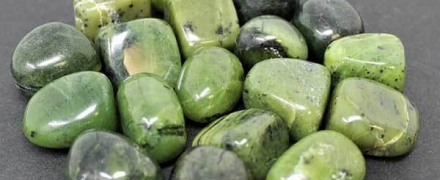open 10 am - 7 pm
laboratory is closed
All facets of actinolite

Actinolite is, at first glance, a discreet rock-forming mineral from the supergroup of amphiboles. But it is not so simple. Rarely found gem-cut varieties of chromium-rich actinolite in cut look almost like a tall emerald, and cuts of lilac manganese-containing actinolite are prized by collectors of gemstones. Vanadium tremolite has a juicy green color, which is also very rarely found in the form of stones suitable for facet cutting, but in relatively large quantities it is represented by cabochon-quality material. Faceted actinolite inserts are most often faceted in the form of a baguette or close to it "emerald" cut. Actinolite crystals with the effect of a cat's eye are very rare. These stones are usually translucent and suitable for making cabochons. But, perhaps, the most important hypostasis of actinolite is nephrite. In this ornamental stone, the share of actinolite is up to 99%, often with other amphiboles of the tremolite-actinolite-ferroactinolite mineral series, as well as hornblende. Very decorative jade cabochons with the effect of a cat's eye and the effect of iridescence - such jade is mainly composed of actinolite. In addition to the main rock-forming amphiboles (tremolite, actinolite, ferroactinolite), jade contains up to 15% of minor minerals, such as talc, calcite, serpentine group minerals, ore minerals, garnets, vesuvian, etc. Jade is perhaps the most popular stone for making stone-cutting products not only in Southeast Asia, but all over the world, which makes actinolite one of the most widespread minerals in the world used in jewelry, despite the rarity of cut stones.
В геммологической практике бывают весьма увлекательные случаи с диагностикой ювелирных вставок
Но помимо редкости цвета и высокой стоимости таких камней, многие розовые камни выделяются одной замечательной особенностью – они проявляют плеохроизм, то есть в зависимости от положения осмотра камня он может иметь дополнительные оттенки – оранжевый или пурпурный.
Currently, gemstones are produced by two fundamentally different technological methods - the High Pressure - High Temperature method (“HPHT”, High-pressure & High-temperature) and the Chemical Vapor Deposition (“CVD”, Chemical vapor deposition) method. The "HPHT" method is the most tested classical synthesis method, which can be used both carbon deposition on diamond from flux melts and catalytic reactions. In "CVD" synthesis, diamond growth occurs on a seed during carbon deposition mainly from a gaseous medium at relatively low temperatures and pressures.
Jewelry and precious stones are just such a category of goods, when buying which you need to pay attention to many criteria.
Sogdianite is a rather rare mineral and more often it can be found as a collection material (moreover, in systematic collections), and it is extremely rare in jewelry.






